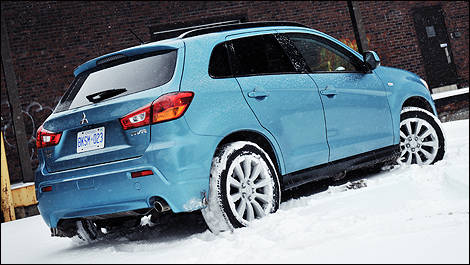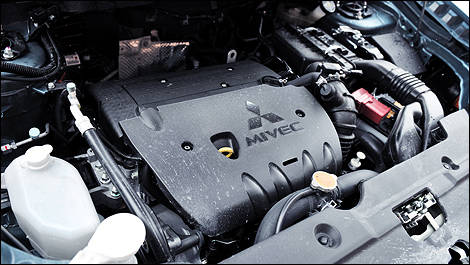I sometimes consider myself lucky to be an auto enthusiast. I say that because when the time comes to actually buy a car, I know so much about each and every one that I can make a decision based on my own opinion and experience.
But when I start shopping for something I know very little about, that’s when I feel a high level of compassion for car shoppers who don’t know much about cars. You could choose any one, but if you want to make the right decision, you must do some research. You must compare one model to another. You must ask questions to salespeople that will answer whatever it takes for you to sign the contract.
And, you could read reviews from the auto writers. People who test and compare these products day in, day out should know exactly which one is right for you.
If you’re interested in Mitsubishi’s new RVR, and online statistics are proving that many of you are, you’ve probably read somewhere that this pint-sized crossover is underpowered and that its CVT transmission isn’t good. And this is one of many examples of why I’m so disappointed by fellow auto journalists who don’t concentrate on what consumers’ real needs are.
I honestly believe that 148 horsepower and 145 lb-ft of torque are more than enough for a compact vehicle, car or truck. Granted, the RVR is no road rocket, but under normal driving conditions, it doesn’t need to be one.
At last fall’s AJAC Testfest, the Kia Sportage was clocked going 0-100 km/h in 11.2 seconds. The RVR took 11.5 seconds, despite a 28-hp disadvantage. It just feels slower because the CVT gearbox doesn’t row through gears like a conventional automatic.
Yes, full-throttle acceleration is a little noisy in the RVR, but the soundtrack is much more pleasant to listen to than in, say, the Jeep Patriot and Compass twins. In addition, the GT model’s wheel-mounted paddle shifters are quite amusing to use, as artificial gear changes (remember, it’s a CVT, so no fixed gears) are performed quickly and effectively. Most of the time, however, I let the tranny work on its own and it does the job nicely.
 |
| The RVR does a good job at handling family-carrying duties. (Photo: Matthieu Lambert/Auto123.com) |
But when I start shopping for something I know very little about, that’s when I feel a high level of compassion for car shoppers who don’t know much about cars. You could choose any one, but if you want to make the right decision, you must do some research. You must compare one model to another. You must ask questions to salespeople that will answer whatever it takes for you to sign the contract.
And, you could read reviews from the auto writers. People who test and compare these products day in, day out should know exactly which one is right for you.
If you’re interested in Mitsubishi’s new RVR, and online statistics are proving that many of you are, you’ve probably read somewhere that this pint-sized crossover is underpowered and that its CVT transmission isn’t good. And this is one of many examples of why I’m so disappointed by fellow auto journalists who don’t concentrate on what consumers’ real needs are.
I honestly believe that 148 horsepower and 145 lb-ft of torque are more than enough for a compact vehicle, car or truck. Granted, the RVR is no road rocket, but under normal driving conditions, it doesn’t need to be one.
At last fall’s AJAC Testfest, the Kia Sportage was clocked going 0-100 km/h in 11.2 seconds. The RVR took 11.5 seconds, despite a 28-hp disadvantage. It just feels slower because the CVT gearbox doesn’t row through gears like a conventional automatic.
Yes, full-throttle acceleration is a little noisy in the RVR, but the soundtrack is much more pleasant to listen to than in, say, the Jeep Patriot and Compass twins. In addition, the GT model’s wheel-mounted paddle shifters are quite amusing to use, as artificial gear changes (remember, it’s a CVT, so no fixed gears) are performed quickly and effectively. Most of the time, however, I let the tranny work on its own and it does the job nicely.
 |
| The RVR’s 2.0-litre engine produces 148 horsepower and 145 pound-feet of torque. (Photo: Matthieu Lambert/Auto123.com) |


